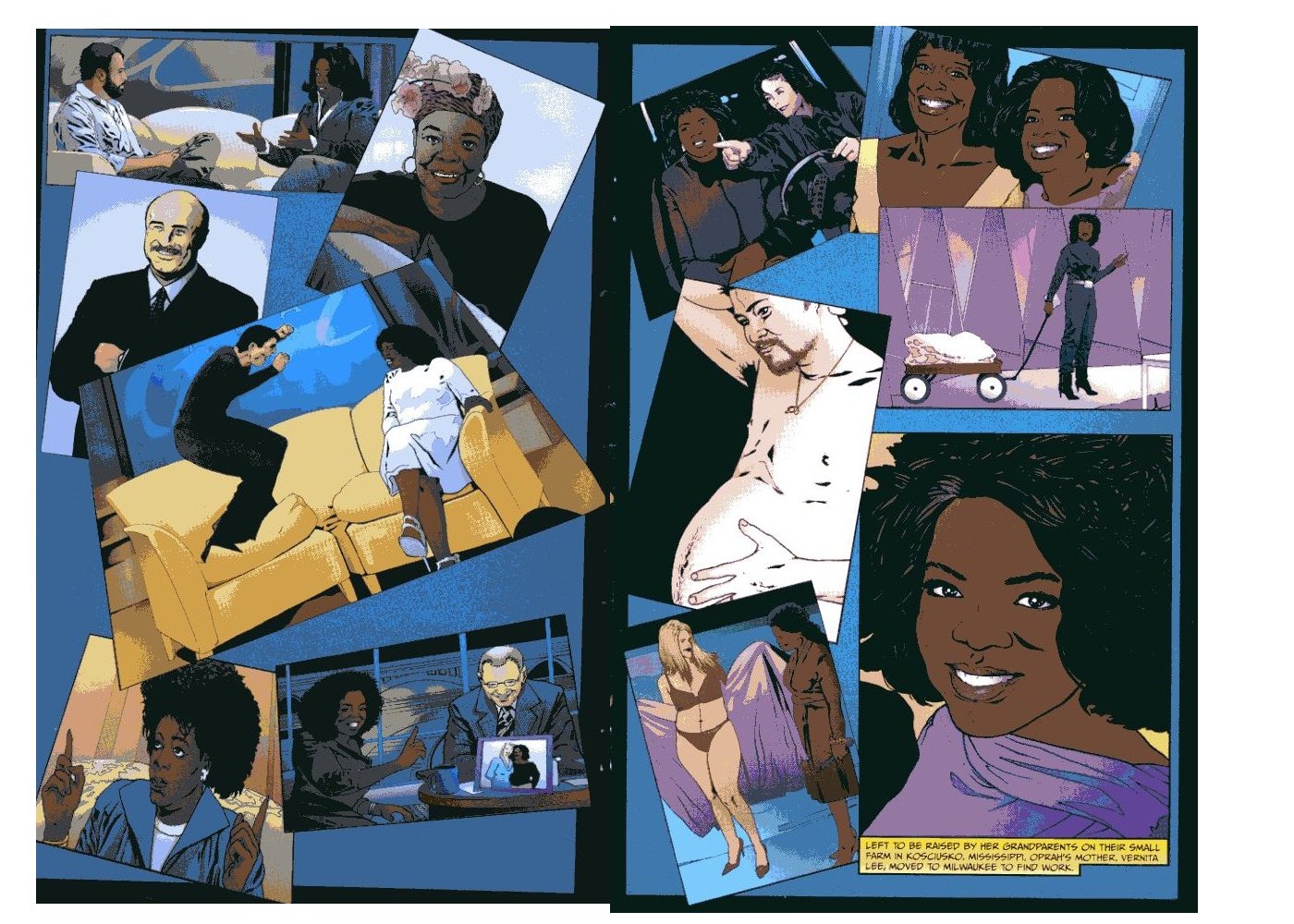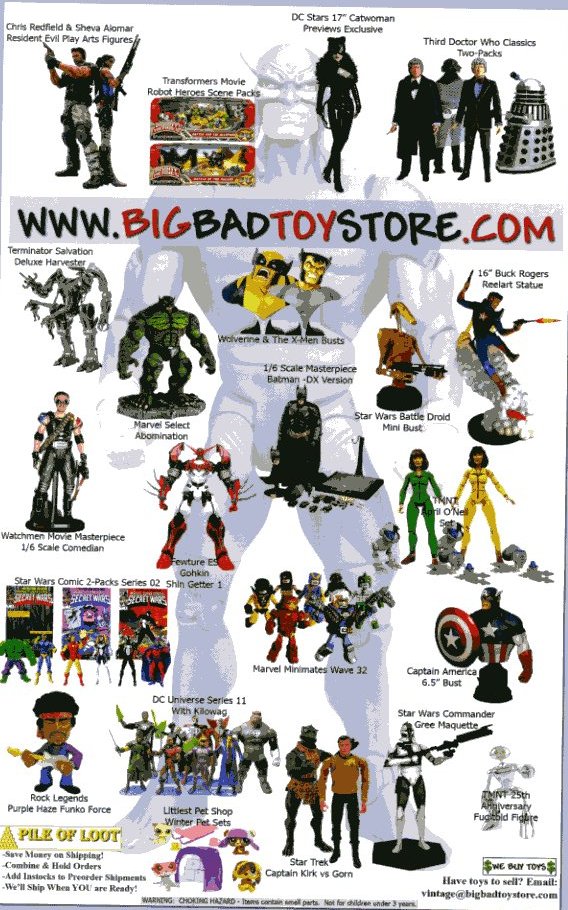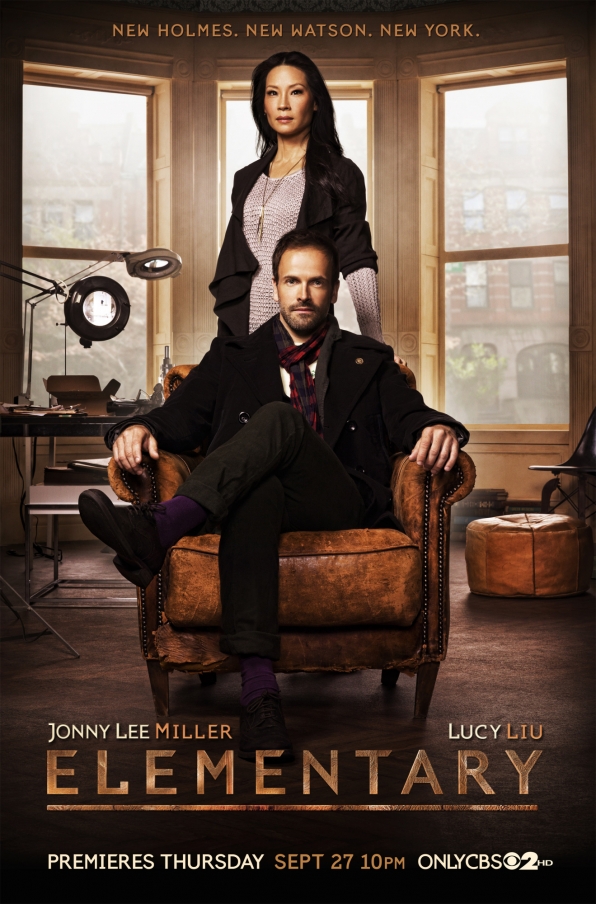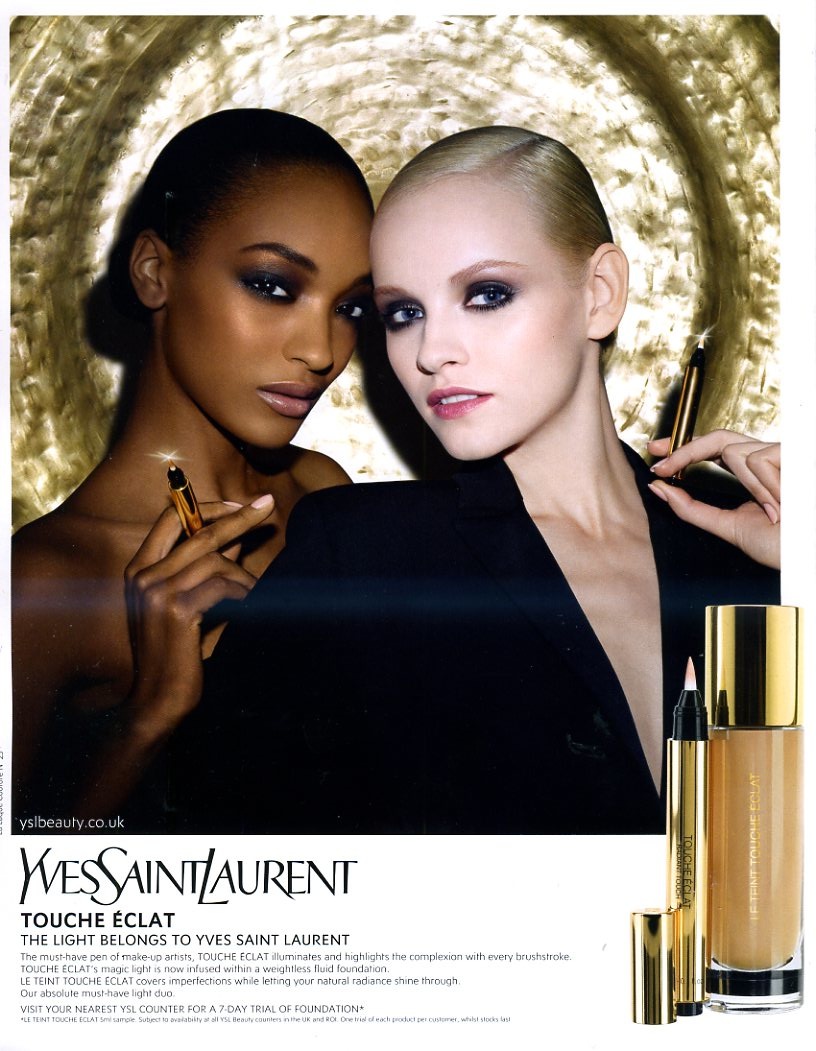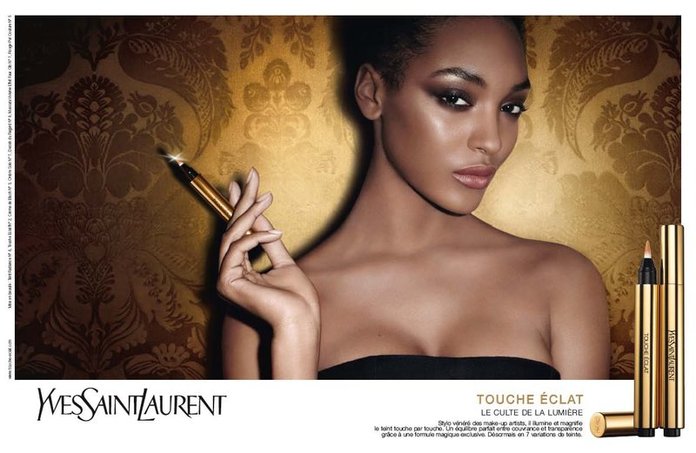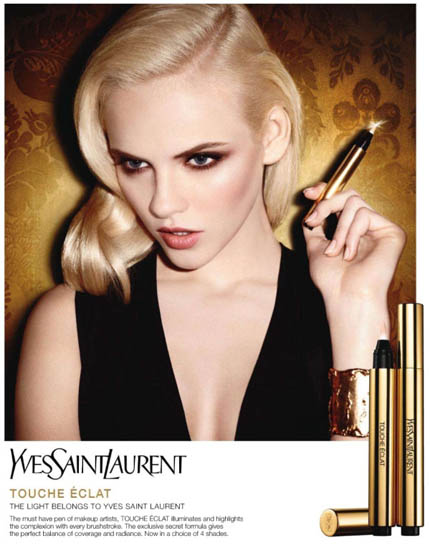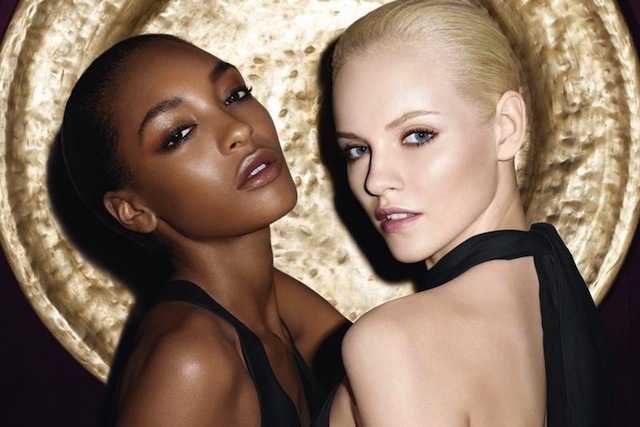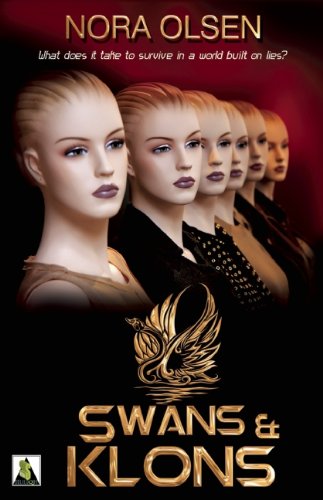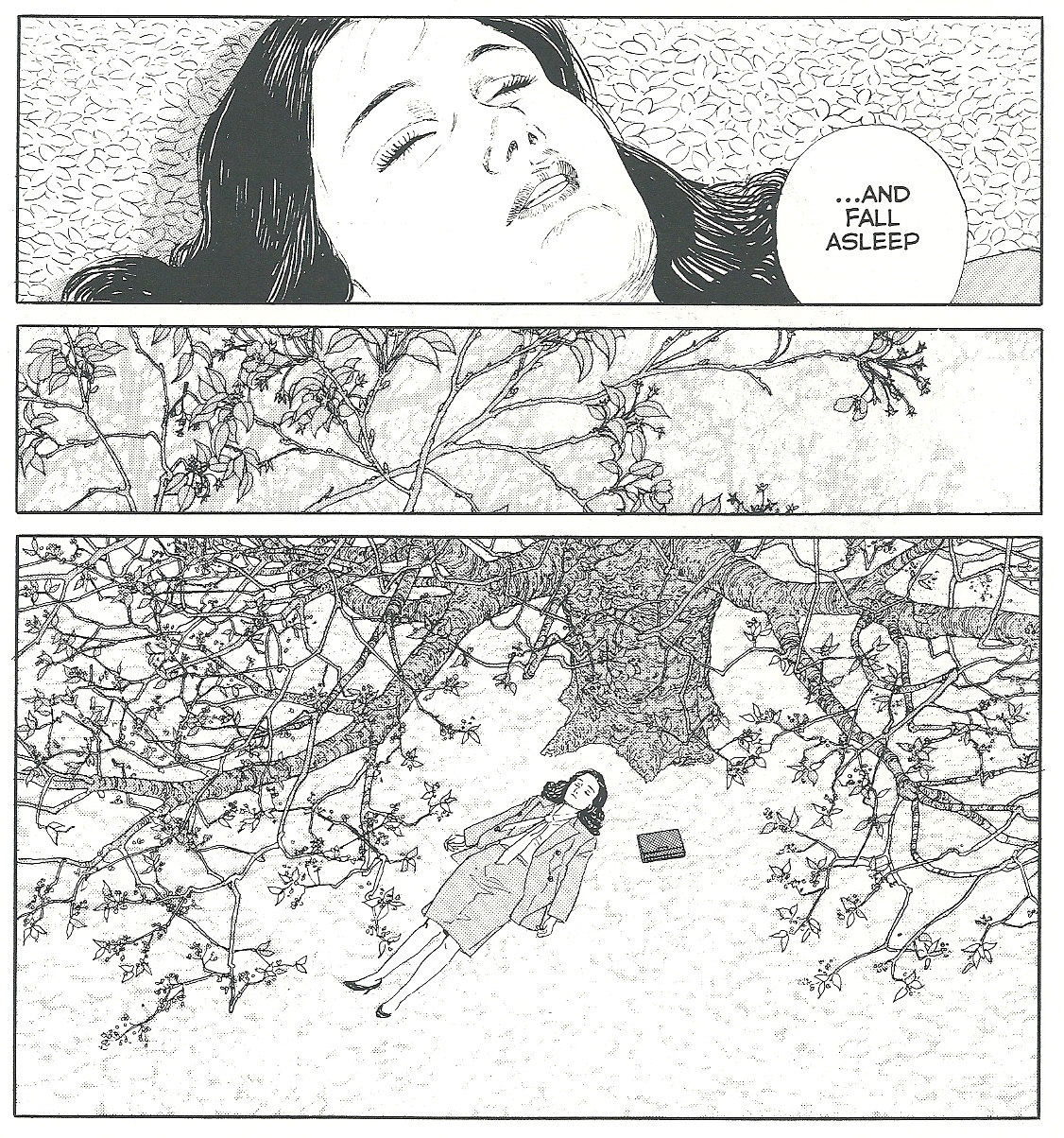This first appared on Comixology.
__________
BlueWater Comics’ Female Force: Oprah Winfrey is in a hurry to start sucking. You can feel it squirming and fidgeting impatiently on the first page, with the so-clichéd-it-hurts movie-zoom into the eyes of child-Oprah. But it’s only on page 2-3 that it triumphantly frees itself from banal badness into the realm of the transcendentally awful:
We’re obviously trying to reproduce the effect of a video montage here — a mediocre idea executed with no particular flare. But…check out that center panel on the left depicting the moment on Oprah’s show where a guest transformed into a zombie manikin, causing Oprah to scream and scream and scream in terror as said flesh-eater leapt across the couch to devour her intestines in an orgy of blood that the Church of Scientology vigorously denied could have been prevented by psychiatric counseling. You remember that, don’t you? Good times!
Or perhaps it didn’t happen quite that way. It’s difficult to know, since writer Joshua Labelle hasn’t provided any captions — and artist Joshua Labelle isn’t, alas, technically capable of providing us with interpretable visual clues. I’m aware that the evil zombie manikin who ate Oprah’s intestines was Tom Cruise — but that’s only through the power of the fact that my wife buys US, not through anything Labelle (in any capacity) has offered me. Through a similar process I’m able to identify some of these other moments (the trans pregnant man, for example…and I guess that’s supposed to be Michael Jackson in the upper left of page 3…driving Oprah around in a tractor? I honestly don’t know.) But…why is Oprah wheeling a wagon? Who’s the woman flashing her in the lower left, and is that supposed to be a surgery scar, or is it some sort of plastic seam indicating that this is a life-size doll, or is it just a mistake?
Obviously, I’m supposed to know the answer to these questions, or at least to vaguely care. This is, in other words, a comic aimed at true-believers. The intention isn’t to introduce Oprah to a new audience, or even to tell us anything in particular about her life. It’s to provide more Oprah-crack for the legions and legions and legions of Oprah-crack addicts. This impression is solidified by the fact that the last third of the book cuts the biographical pretense altogether to wallow in the gooey trough of earnest uplift. (“It’s about achieving your dreams but not stopping there. It’s about fighting for what you believe in. It’s about obtaining untold millions by marketing vacuous feel good rhetoric and then using those millions to prove the efficacy of vacuous feel good rhetoric. Or something.”)
None of this is especially surprising. A shoddy piece of shit comic designed to shamelessly exploit a massive marketing phenomena? Shock, horror, etc. But what’s weird is…well, look at this:
That’s an ad from the Oprah comic in question. There’s also an ad for Geek Magazine, for the action film Crank 2 and for Play Magazine, which I assume is some species of videogame publication, but the ad doesn’t really tell me anything and my browser won’t go to their website. And there’s also (wouldn’t ya know!) an ad for Comixology’s iphone apps.
Admittedly, there are also ads for things that you’d expect to see advertised in an Oprah comic, like the Pink Project charity photo book and PETA . But that doesn’t change the fact that you’ve got here a comic that seems to be aimed at hard core Oprah fans which is advertising the kind of nerd detritus (nerdtritus?) you’d expect to see being hocked in a super-hero title. Based on both story and ads, the average reader of this comic is a 25-40-year-old woman who turns into a 15-25 year old boy whenever s/he goes to the store. Sort of an updated Ranma ½ with consumption replacing water.
Not that I’m saying that Oprah fans can’t like action movies, or vice versa. I’m sure some do. But advertising, not to mention shallow band-wagon product generation, is all about demographics. You’ve got your Oprah comics, you sell ads that target the people who love Oprah. This isn’t rocket science. You don’t expect to see adds for shoes and kitchenware in Superman.
With comics, I’m never taken aback by lousy quality. After all, most things are lousy — maybe comics are a little worse than everything else, but not enough to squawk about. But the marketing confusion in even comics that have no point other than their marketing: I can never get over that. Why churn out this horrible Oprah Winfrey piece of dreck if not to make money? And how can you make money if you don’t even know who you’re trying to sell to? I mean, I bought this in a direct market store. What are they doing even selling it through the direct market? What venue could they find where folks would be less likely to pick this up?
I don’t know…maybe Oprah’s face will just cause bills to adhere to the cover through the mystical epoxy of branding. But if they turn a profit on this thing, it sure won’t be BlueWater Comics fault. Comics won’t be a mature art form until the day that the form’s bottom feeders learn to be competently venal.
Addendum: I thought I’d heard of BlueWater as being a particularly problematic company. And yep, here’s Tom Spurgeon and Chris Butcher teeing off on them. I guess the chances of making money on this Oprah Winfrey comic increase exponentially if you kind-of, sort-of don’t necessarily pay your creators. Maybe comics are mature after all.

